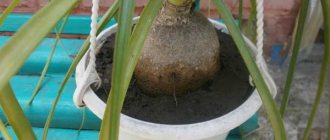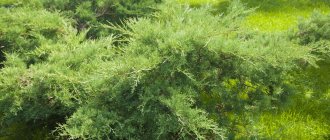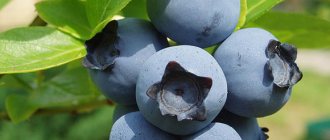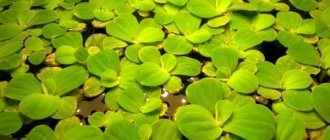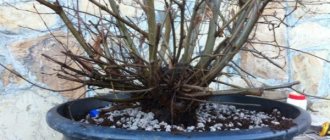These plants have bright, pure pink or red flowers that attract butterflies. They make a great addition to garden borders and are good for cutting. Small species are suitable for rocky gardens or raised beds, and Lychnis flos-cuculi (Lychnis flos-cuculi) is suitable for damp places, such as the banks of ponds.
Many species have sticky glands that catch (but do not digest) small insects.
All species listed here are herbaceous polygons.
Lychnis 596
Short description
The plant is sometimes called Zorka vulgaris; thanks to its fiery bright inflorescences, it seems as if it is glowing.
A perennial plant can grow in one place for five years. It has erect stems covered with ovate or lanceolate leaves. The bushes can grow up to one meter in height. Lychnis chalcedony blooms in June and blooms for 75 days. With its decorative appearance, it gives the garden a fabulous beauty with bright luminous flowers.
The bushes have small red flowers with two-lobed petals, which are collected in spherical inflorescences with a diameter of 10 centimeters.
Types and varieties of Lychnis with photos and names
Below we will describe those types and varieties of lychnis that are cultivated by gardeners.
Lychnis arkwrightii
The height of the compact bush varies from 0.35 to 0.4 m; the shoots and narrow leaf blades are burgundy in color. The plant contains a small number of inflorescences or single orange flowers, reaching approximately 30 mm in diameter, which bloom at the ends of the shoots in the last days of June, while flowering continues until mid-August. The most popular variety is Lychnis Vesuvius: the rich green leaf plates are heart-shaped, the inflorescences are more magnificent than those of the main species, and consist of red-orange flowers.
Alpine lychnis (Lychnis alpina = Viscaria alpine = Steris alpine)
In nature, this species can be found in the tundra and forest-tundra of Scandinavia, the eastern part of Greenland and North America, as well as in the mountain tundra and alpine belts of Europe. The height of the perennial bush is from 0.1 to 0.2 m. There are basal leaf rosettes, as well as several shoots on which there are opposite linear leaf plates. Paniculate inflorescences consist of flowers of pink-red or crimson color. The Lara variety is the most popular: many light pink flowers open on the bush.
Lychnis viscaria (Viscaria vulgaris = Lychnis viscaria = Silene viscaria)
In nature, it can be found in the Crimea, Central Europe, Ciscaucasia and southwest Siberia. The height of the shoots of this herbaceous perennial plant is 0.4–1 m. Their upper part is very sticky, which is why this species is also called resin. White or crimson flowers of 5–7 pieces are included in whorls that form panicles. The most popular varieties:
- Rosetta . The color of the double flowers is deep crimson.
- Lychnis terry flora pleno . The height of the bush is about 0.3 m. The linear narrow basal leaf plates are painted dark green. Racemose inflorescences consist of double flowers of lilac color, reaching 20–30 mm in diameter.
Lychnis crown (Lychnis coronaria = Lychnis coriacea)
The height of this herbaceous perennial varies from 0.4 to 0.9 m. The loose racemose inflorescences consist of pink flowers, but there are also plants with white inflorescences. Popular varieties:
- Angels Blanche . The color of the flowers is dark pink, white or crimson.
- Mysterious Island . The center of the flower is pink, and along the edge of the petals there is a white border.
Cuckoo adonis (Coronaria flos-cuculi), or cuckoo blossom (Lychnis flos-cuculi)
This species is found naturally throughout most of Europe. Such a delicate flower forms a loose turf, which consists of rosettes and shoots, branching in the upper part and reaching a height of 100 cm. Opposite narrow stem leaf plates gradually decrease in size as they approach the top of the shoot. The scutes consist of large, but extremely thin pink flowers, reaching 40 mm in diameter. The petals are divided into 4 lobes, each of which droops and curls. There are forms with white flowers. Popular varieties:
- Nana . The height of the bush is about 0.15 m.
- Alba . The flowers are painted white.
- Rosea captivity . Double pink flowers.
Lychnis fulgens
In the wild it is found in China, the Far East, Eastern Siberia and Japan. Straight shoots have a height of 0.4 to 0.6 m. The shape of the greenish leaf plates is oblong-ovate or oval-lanceolate. Corymbose-capitate inflorescences consist of scarlet-red flowers reaching 40–50 mm in diameter, the petals are divided into 4 parts.
Lychnis x haageana
The height of this garden hybrid is from 0.4 to 0.45 m. The leaf blades are oblong-ovate. The racemose inflorescences consist of 3–7 orange-red flowers, reaching 50 mm in diameter. The petals are deeply incised, with a bend. On each side of the petal there is a long narrow tooth. This plant is frost resistant. The most popular variety is Molten Lava: umbrella-shaped inflorescences consist of rich red flowers, the color of the foliage is bronze.
Lychnis chalcedonica, or dawn
It is found naturally in the European part of Russia, Mongolia, Siberia and Central Asia. The height of the herbaceous perennial varies from 0.8 to 1 m. The shape of the foliage is ovate-lanceolate or ovate. The diameter of the corymbose-capitate inflorescences is about 10 centimeters; they consist of fiery red flowers, reaching 30 mm in diameter. Petals can be bilobed or notched. The species is frost-resistant. It has been cultivated since 1561. There is a garden form of albiflora (the color of the flowers is white, and their diameter is about 20 mm), as well as varieties with simple or double flowers (they are pink in color with a red eye). A popular variety of Lychnis Maltese cross: the plant is distinguished by lush flowering, graceful flowers have a rich red color.
Features of planting
Zorka vulgare stands up to a wide variety of weeds and blooms harmoniously at the appointed time. You can plant the plant in autumn or early spring by sowing seeds in the ground. In the second year after planting, it will bloom in late summer.
In order for Lychnis to bloom the same year it is planted, it is important to keep the seeds in the refrigerator for 14 days, and then sow them for seedlings in March. It is recommended to grow seedlings in bright light and low air temperatures. As soon as the seedlings grow up, they are transplanted from the greenhouse or greenhouse into open ground.
Important landing rules:
- Lychnis is planted on any garden, light, permeable and non-acidic soil.
- If the land plot is located near groundwater, drainage using coarse sand.
- It is important to ensure that the bush does not die due to too much dampness.
- Too heavy soil can be lightened with sand.
- When planting seedlings in open ground, add humus or compost in a small amount to the holes.
Growing
All plants tolerate frosts down to -25°C, and sometimes lower (exceptions are mentioned in the text). Apart from L. flos-cuculi, which requires moist soil, all others grow well in most well-drained soils in sun or partial shade. Small plants for alpine slides need compost with sand and a place in bright sun. The species I. arkwrightii and L. haageana can be grown as annuals and generally flower well in the spring sown year. The species I. coronaria, L. flos-jovis and L. viscaria propagate in the garden by self-seeding, and the young plants can then be transplanted to the desired locations.
Related article:
Phlox subulate in the garden
Features of bush care
Since Lychnis chalcedony easily tolerates drought, it is rarely watered. If the summer is too hot and you want to maintain the decorative appearance of the plant, water it once a week.
In spring, it is important to feed the bush with complex fertilizer. In autumn, cut off the above-ground part. The terry type of plant must be covered for the winter. All other varieties are winter-hardy.
Every five years, the bushes are dug up in spring or autumn, divided into several parts and transplanted to new places. When planting between plants, be sure to leave a gap of 30 centimeters.
Wintering of Lychnis
It is no coincidence that Lychnises are considered hardy, frost-resistant perennials. But in snowless winters, especially in the first two years, lychnises can suffer from soil freezing and lack of stable conditions, constant fluctuations in temperature and humidity. Therefore, the best strategy for this perennial is preventive shelter. Just high mulch or light hilling, covering with spruce branches is enough.
Lychnis arkwrightii. © Kathy Diemer
Protecting the plant from various attacks
It is easy to care for lychnis, but it is important to protect it from various diseases and insect attacks.
- Most often, bushes are affected by rust, root rot, and leaf spots. It is important to carefully inspect the plants and provide good drainage before planting. Such measures will prevent the occurrence of unwanted diseases.
- Lychnis can be completely damaged due to aphids and leaf rollers. If larvae of such insects are found, treat with tobacco decoction or tomato tops. If there are too many pests, gardeners save the plants by using special chemical insecticides.
Lychnis in landscape design
Lychnis in landscape design is used in flower beds, group plantings, and mixborders. It is good for rocky hills and rockeries. Lichnis is also used in the design of the banks of decorative garden ponds and lakes. Tall perennials can be used for summer decoration of fences, walls, gazebos (combined, for example, with clematis).
Lychnis in landscape design
This plant is mainly planted to add certain color accents, add brightness to the flower garden, and concentrate attention on bright spots. Lychnis alpine is used in rock gardens in sunny areas; it is also used to decorate stone flower walls. It is especially effective in group plantings among yellow flowers.
Lychnis is bright in bouquets when cut, but, unfortunately, it does not last long. Therefore, grow it in plots, decorate stone walls, plant it in a flower garden and rock garden and admire the vibrant colors of this flower.
Features of the use of the plant
Lychnis is used in folk medicine, in farming and to create a beautiful landscape. Rules for the use of common dawn:
- in some countries the plant is used as an anti-inflammatory and antimycotic agent to treat skin and blood diseases. It is contraindicated to use products with the plant in case of individual intolerance, during pregnancy and lactation, as well as in childhood. It is important to consult a doctor before use;
- The farm uses powder from the roots of the plant. It is used to make soap that removes greasy stains from clothes and hands;
- To create landscape design, gardeners plant Lychnis both individually and in whole groups. Plant it near non-aggressive plants. It is recommended to plant red flowers among green perennials. They decorate garden paths, borders, flower beds, and the banks of small ponds.
- Flower growers like to plant common dawn on their plots, as it is easy to care for and pleasant to use for useful purposes.
Fertilizer and feeding
Growing lychnis is not difficult, but you should provide the plant with the necessary minerals by applying mineral fertilizers 2-3 times during the growing season. The first time the perennial should be fed during the period of active growth, but before flowering begins, by preparing a solution of potassium sulfate, urea, superphosphate (take one tablespoon per bucket of water). Water the plant at the rate of 3 liters of solution per 1 square meter of area.
Feed Lychnis with mineral fertilizers
During flowering, a different solution is used for fertilizer, which includes superphosphate, potassium sulfate, and Agricola 7 - all in 1 tablespoon. Dilute in 10 liters of clean water and water, using up to 5 liters of fertilizer per square meter of lychnis growth. The perennial should be fed with the same solution in the fall after flowering has ended.
Pest and disease control
Lychnises are considered resistant plants that, under optimal conditions and with regular care, do not face problems. But if these perennials suffer from waterlogging, too frequent and abundant watering, and are planted very densely, then they may be vulnerable to spotting, rust, and root rot. It is better to deal with problems by correcting care and living conditions, replanting, and copper-containing fungicides.
Lychnises in a neglected state or in the vicinity of affected plants are also threatened by aphids, leaf rollers and slobbering pennies. Pests can be controlled using biological means (for example, tobacco solution) and insecticides. If the plant has been infected, then in addition to control in the next 2-3 years before the flowers bloom, it is necessary to carry out preventive spraying.

